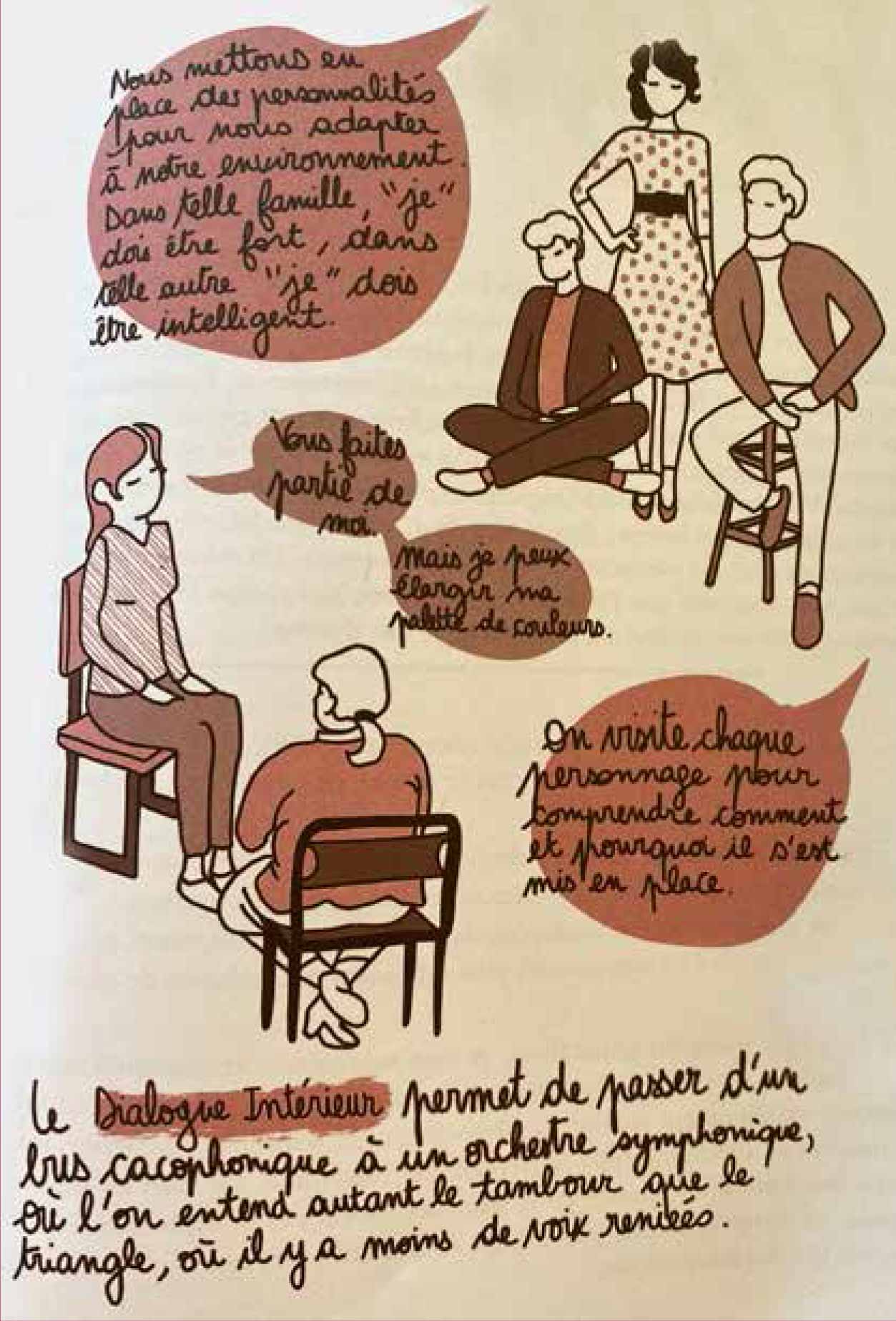Voice Dialogue / Interior / Internal Dialogue
What is it about?

The objective of the Voice Dialogue approach is to better know yourself by allowing a dialogue between your co-personalities, also called “voices”. These inner voices may be complementary, opposing or contradictory.
Created in the 70s by Dr Hal and Sidra Stone (a couple of American analysts of Jungian inspiration), theVoice Dialogue or Internal Dialogueis a known method ofself- knowledge .
The approach allows the patient to discover, experience and integrate the different “co-personalities” who inhabit him or herself.
According to Hal and Sidra Stone, suffocating some of our co-personalities plunges us into painful inner conflicts (inability to make a difficult choice, for example) and locks us into repetitive feelings such as guilt, nervousness, anger or fear.
The principle of Internal Dialogue is quite simple: during the sessions, the person engages a dialogue in order to cope with the opposites “nice-bad”, “activist-relaxed”, “tyrant-victim”, “obedient-rebel” voices, etc.
Each co-personality has its own system of values, reactions, energy, feelings and judgments.
The principle of Internal Dialogue / Voice Dialogue is to become aware of the way that these voices interact, in order to be able to manage your life with more freedom, face daily situations, or take decisions. It is about living your life knowing yourself, getting rid of automatisms, and allowing yourself some flexibility.
What happens during a session ?

At first, we would take a few minutes for a face-to-face dialogue, in order to define your difficulty.
It may be an internal conflict, a depression, anger, guilt, fear …
To bring out this idea in to consciousness, another session will follow. It will be like a play where the person will talk to one of his / her inner voices.
Learning to know each one of these voices, will open a door to the preconscious. This allows the person to choose which part should be present in his/her life, depending on the circumstances.
The aim is not to reject them but to allow them to coexist with all our other behaviors.
Finally, the inner dialogue brings a better knowledge of ourselves by highlighting the aspects that we tend to hide, and leave less room for the demeaning part that often speaks too loudly.
All this allows us to find harmony.
“Accepting yourself is the essence of the whole moral problem and the epitome of a life perspective. That I feed the hungry, that I forgive the offenses, that I love my enemy… all these are undoubtedly great virtues… But what if I find out that the poorest of beggars and the most impudent offender are all within me, that I am the one who needs my own goodness, that I myself am the enemy who is to be loved?
So what is going on?
“C.G. Jung
Introduction To Voice Dialogue
Ressources
° Body Mind Information
° Youtube channel on Internal Dialogue or Voice Dialogue
° The power of vulnerability by Brené Brown on Ted.com
° https://www.voice-dialogue-france.fr/hsstone/
° https://www.psychologies.com/Therapies/
° Personal-development / Methods / Articles- and-Files / The-interior-dialogue-what-is-what-it-is
